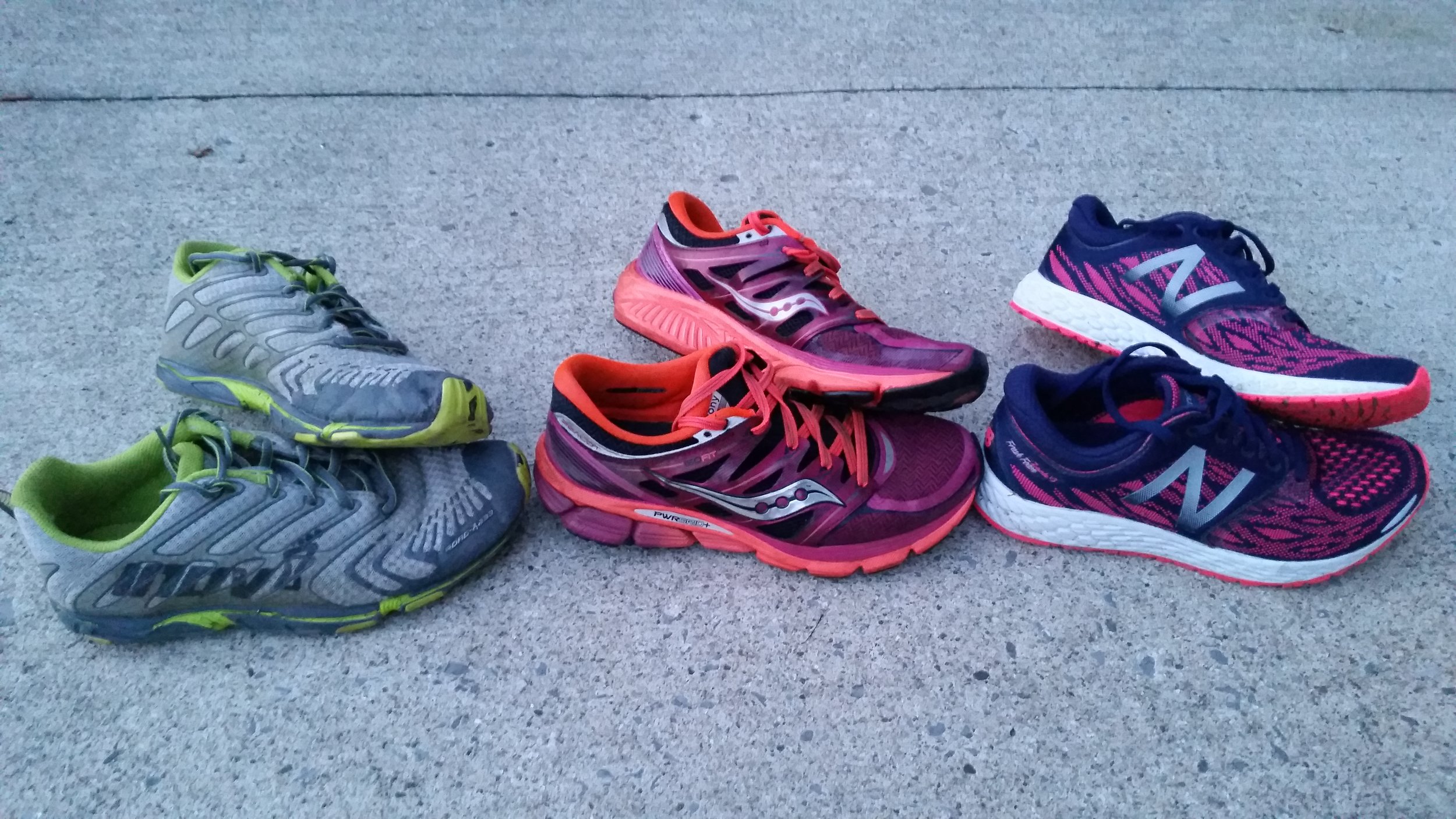Running shoes and Rehabilitation: A Personal Account
A common question I get from both experienced and novice runners is which shoes should they be using. As with most things related to physiotherapy, the answer is, it depends. It depends on a lot of things including: running form, training regimens, goals, and injuries. Yes it can matter which type of shoe you are running in to get you through an injury. I am going to share with you my personal experience of why my last three pairs of running shoes have been quite different styles, and why I changed to a different style of shoe to rehab an injury.
First it should be said that it doesn’t matter which shoes you are in if you have poor running technique. No shoe will be able to make up for the risks with improper form. Bottom line is that if you are running with poor form you are going to experience some pain eventually. For a quick adjustment in running technique check out my blog “ONE EASY CHANGE TO RUNNING TECHNIQUE CAN PREVENT INJURIES”. For a more detailed look, contact a physiotherapist or other health care professional that specializes in running and can do a run technique analysis for you.
Now, back to the shoes.
A few years back I decided to make the long transition into minimalist shoes. After trying a few different kinds and finding they weren’t holding up against long distances on asphalt, I ended up in Inov-8’s Road-X 233 (see the first shoes in the image above). These shoes had a slightly more rigid base, and the structure was a bit more sturdy than a true minimalist shoe. Without this being a shoe review, I loved these shoes and ran in them without incident.
Fast forward to about a year later. By this time I had been doing CrossFit about six months and had recently bought a pair of lifting shoes. (Lifting shoes are designed for Olympic lifting. They have a large amount of stability with a big height difference between the heel and toes). My technique doing Olympic lifts was not so good and even in the new lifting shoes, I was often too far forward balanced on my toes instead of on my heels (note to all novice CrossFit athletes, get your weight back on your heels, it saves you grief in the long term). This put a lot of stress on my calves and shins and I developed shin splints, which made it very painful to run. This is why I bought the Saucony Zealot Iso shoes (second shoes in image). These shoes are VERY spongy, but have a snug fit lacing system. The spongy soles helped a lot with the shin splint pain through shock absorption when striking the ground on each step. They also have an exaggerated toe off motion (helps the foot roll forward to decrease the amount of push required from the calf). This helped minimize the amount of work my lower legs had to do while running. It would have been better if the shoe had a higher drop (height difference between the toe and heel, in this particular shoes = 4mm) as this would take more strain off my hind leg, but they seemed to work well enough for my purpose and allowed me enough relief to keep running short distances (4-7 km) while I rehabilitated my shin splints.
The spongy material of the Saucony’s worked well for what I needed, but broke down much quicker than I expected so it wasn’t long before they were too loose and feeling almost wobbly, thus I needed a new pair. My shin splints were thankfully gone, but I did like the feel of Saucony’s. I started looking for something more firm than that, but still spongy and with a more durable sole. I still have some work to do on my Achilles and calf mobility, and I wasn’t prepared to go through the slow transition down to a minimalist shoe, so I needed a shoe with a medium drop. So what I was essentially looking for was a hybrid between the previous two shoes. This is how I ended up in the New Balance Fresh Foam Zante V3. This shoe is a neutral support, light weight, a medium foam with a more rigid sole, and a 6mm drop heel to toe. I would have liked a more durable material for the sole as I think these will also wear down before their time, but I have done a handful of runs in them and so far they are without issue.
So shoes can make a difference when it comes to an injury, but it depends on your individual situation. If you are dealing with an injury, or just getting over one, you might consider changing shoes as your needs change. If ever in doubt, ask a physiotherapist that has some experience with running injuries to help make the right decision for you.
Feel free to message me with your questions, or post them through social media.
For additional tips on injury prevention and rehabilitation on all things running, CrossFit, outdoor adventure and travel, follow me on YouTube, Facebook or Instagram.




